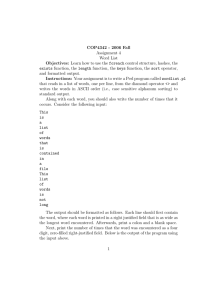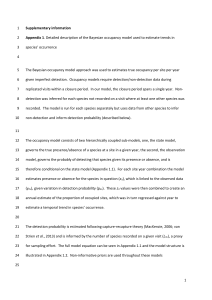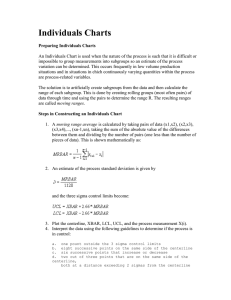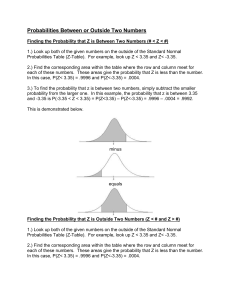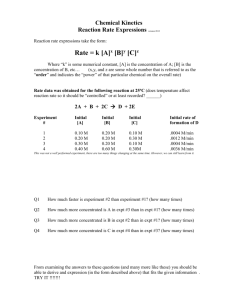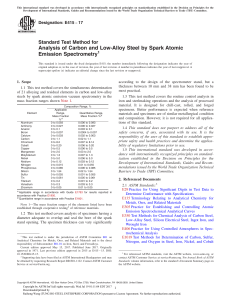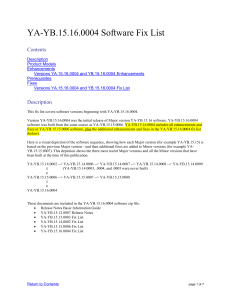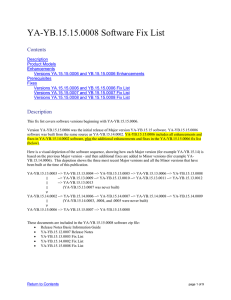PHYS-1500 PHYSICAL MODELING ...
advertisement
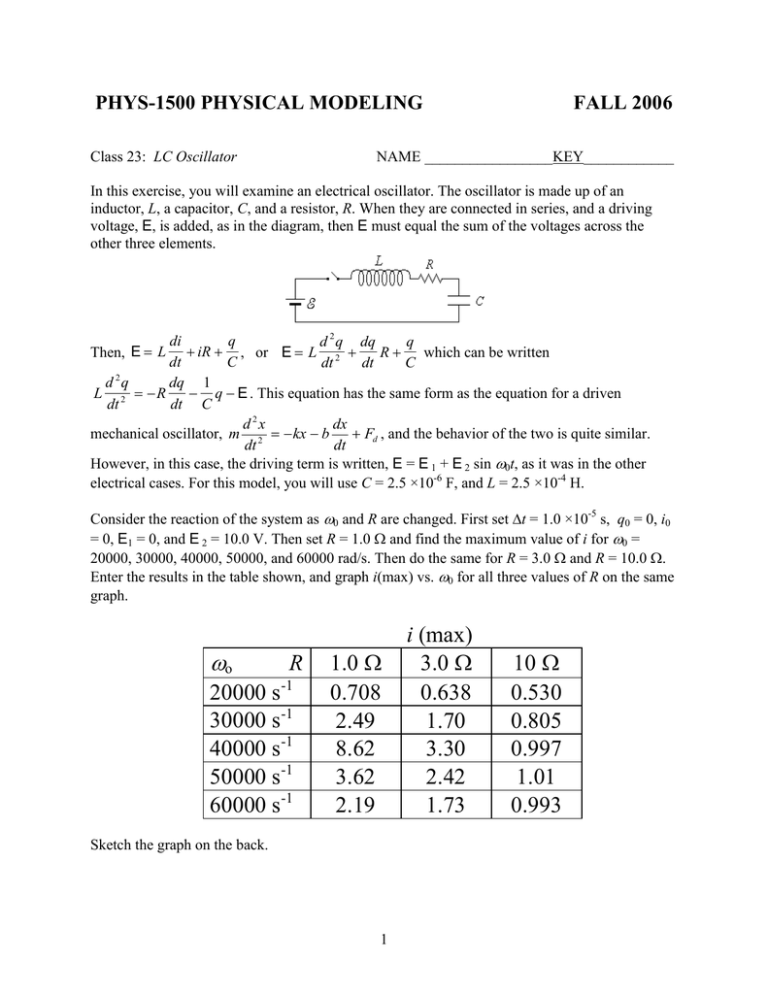
PHYS-1500 PHYSICAL MODELING Class 23: LC Oscillator FALL 2006 NAME _________________KEY____________ In this exercise, you will examine an electrical oscillator. The oscillator is made up of an inductor, L, a capacitor, C, and a resistor, R. When they are connected in series, and a driving voltage, E, is added, as in the diagram, then E must equal the sum of the voltages across the other three elements. di q d 2 q dq q Then, E L iR , or E L 2 which can be written R dt C dt C dt d 2q dq 1 L 2 R q E . This equation has the same form as the equation for a driven dt C dt d 2x dx mechanical oscillator, m 2 kx b Fd , and the behavior of the two is quite similar. dt dt However, in this case, the driving term is written, E = E 1 + E 2 sin 0t, as it was in the other electrical cases. For this model, you will use C = 2.5 ×10-6 F, and L = 2.5 ×10-4 H. Consider the reaction of the system as 0 and R are changed. First set t = 1.0 ×10-5 s, q0 = 0, i0 = 0, E1 = 0, and E 2 = 10.0 V. Then set R = 1.0 and find the maximum value of i for 0 = 20000, 30000, 40000, 50000, and 60000 rad/s. Then do the same for R = 3.0 and R = 10.0 . Enter the results in the table shown, and graph i(max) vs. 0 for all three values of R on the same graph. o R 20000 s-1 30000 s-1 40000 s-1 50000 s-1 60000 s-1 1.0 0.708 2.49 8.62 3.62 2.19 Sketch the graph on the back. 1 i (max) 3.0 0.638 1.70 3.30 2.42 1.73 10 0.530 0.805 0.997 1.01 0.993 10 i max (A) 8 1 6 3 4 10 2 0 10000 20000 30000 40000 50000 60000 70000 0 (rad/s) Now set E 1 and E 2 = 0, and q0 = 1.0 ×10-4 C. Set R = 1.0 and sketch the graph of q vs. t. Then do the same for R = 3.0 and 10. 0.00015 0.00012 0.0001 0.00008 0.0001 0.00006 0.00005 q (C) q (C) 0.00004 0.00002 0 0 0 0.0002 0.0004 0.0006 0.0008 0.001 0.0012 -0.00002 -0.00005 0 0.0002 0.0004 0.0006 0.0008 -0.00004 -0.00006 -0.0001 -0.00008 t (s) t (s) R = 1.0 0.00012 0.0001 q (C) 0.00008 0.00006 0.00004 0.00002 0 0 0.0002 0.0004 0.0006 0.0008 0.001 0.0012 -0.00002 t (s) R = 10 2 R = 5.0 0.001 0.0012 Finally, set q0 = 0, E 1 = 10.0 V, and E 2 = 0. Try the three values of R that you have used before. Which value of R would you use if you just wanted to get the capacitor charged to a constant charge in the shortest time? 0.00005 0.000045 0.000045 0.00004 0.00004 0.000035 0.000035 0.00003 q (C) q (C) 0.00003 0.000025 0.00002 0.000025 0.00002 0.000015 0.000015 0.00001 0.00001 0.000005 0.000005 0 0 0 0.0002 0.0004 0.0006 0.0008 0.001 0.0012 0 0.0002 t (s) 0.00003 0.000025 q (C) 0.00002 0.000015 0.00001 0.000005 0 0.0002 0.0004 0.0006 0.0006 0.0008 t (s) R = 1.0 0 0.0004 0.0008 0.001 0.0012 t (s) R = 10 R = 10 charges in the shortest time. 3 R = 3.0 0.001 0.0012

